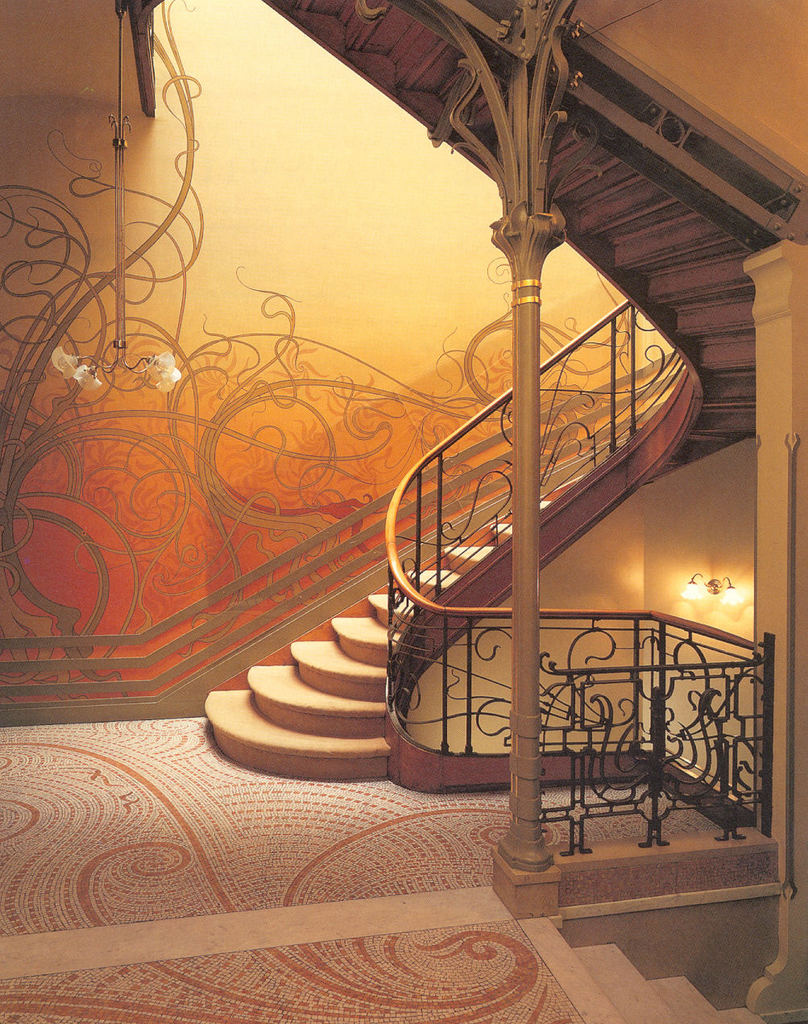 Art Nouveau and Art Deco are too often confused by antique dealers and the public alike. So what is the difference between Art Nouveau and Art Deco, apart from the time period. It is really a question of style.
Art Nouveau and Art Deco are too often confused by antique dealers and the public alike. So what is the difference between Art Nouveau and Art Deco, apart from the time period. It is really a question of style.The graceful sensuality of Art Nouveau lasted a mere 20 years between the 1890s and the outbreak of World War I. It derived its name from Maison de l'Art Nouveau, an interior design gallery opened in Paris in 1896. The style had many different names throughout Europe being known as Jugendstil in Germany, Sezessionstil in Austria, Modernista in Spain, Stile Liberty and Floreale in Italy. It was a reaction against the historicism which had plagued the 1800s.
After the guns fell silent in 1918, the seeds of modernism, sown before the war, were able to take root and flourish. The style of the 1920s and 1930s became known as Art deco, an abbreviation of L´Exposition Internationale des Arts Decoratifs Industriels et Modernes, The Paris Exhibition that took place in 1925.
Art Deco (or Art Moderne) was itself a reaction against the Art Nouveau style and was very popular in the 20s and 30s but was not actually termed Art Deco until the 1960s. It was an elegant style of cool sophistication in architecture and the applied arts, which ranged from luxurious objects made from exotic material to mass produced, streamlined items available to a growing middle class.
Both were reactionary movements, Art Nouveau against the staid traditionalism and revivalism of the late 1800s, and Art Deco against the curvaceous excesses of Art Nouveau. The former was probably the last great decadent style and the latter the first trumpet call of the truly modern age.
 Where as Art Nouveau took organic forms and used the writhing, sinuous shape of plants, flowers, insects and birds as its inspiration, the straight, stepped, soaring lines and geometric shapes of Art Deco mirrored the exciting post-war developments in technology and mass production techniques. Art Nouveau designers worked with wood, glass and clay, as had their predecessors, but their counterparts of the 1920s and 30s took advantage of the new materials such as tubular steel, plate glass, concrete, plywood and even plastics.
Where as Art Nouveau took organic forms and used the writhing, sinuous shape of plants, flowers, insects and birds as its inspiration, the straight, stepped, soaring lines and geometric shapes of Art Deco mirrored the exciting post-war developments in technology and mass production techniques. Art Nouveau designers worked with wood, glass and clay, as had their predecessors, but their counterparts of the 1920s and 30s took advantage of the new materials such as tubular steel, plate glass, concrete, plywood and even plastics.The most obvious and well known examples of the Art Nouveau style for articles made for the home are the glass of Emile Gallé and Tiffany, the furniture of Majorelle and Liberty, the metal wares from the German manufacturer W.M.F. and once again Liberty.
The sculptures in bronze and ivory by Chiparus and Preiss, the exquisite glass of René Lalique, and the pottery of Clarice Cliff, typify the various styles and movements that come under the Art Deco umbrella.
Both styles found a following during the 1960s and both were initially derided by serious collectors of antiques, until first Art Nouveau and then Art Deco were given credibility when the top auction houses in London, Paris and New York began to devote sales to them. The market developed rapidly during the 1970s and is now an established area of collecting.
 Although prices can be very high, both styles are still accessible to those on a more restricted budget.
Although prices can be very high, both styles are still accessible to those on a more restricted budget.Not everything made during these periods can be called Art Nouveau or Art Deco. A vase from the year 1900 is not automatically described as being Art Nouveau, and a table is not an example of Art Deco just because it was made in 1930.
Why not?
It is a question of style
To summarise these two styles
Art Nouveau fluidity, organic and whiplash motifs
Art Deco streamlined, geometric, shiny and "modern"
A Note Of Caution
The market is flooded with reproductions from both of these periods, purporting to be genuine but alas they are fakes. For an item to be genuine it has to be not only of the style but actually been made during the period.
Art Deco or Art Nouveau style indicates a reproduction, that is of the style but not made during the period. Many Art Deco items were made during the 1970s and increasingly many items are now being made in China and elsewhere.
